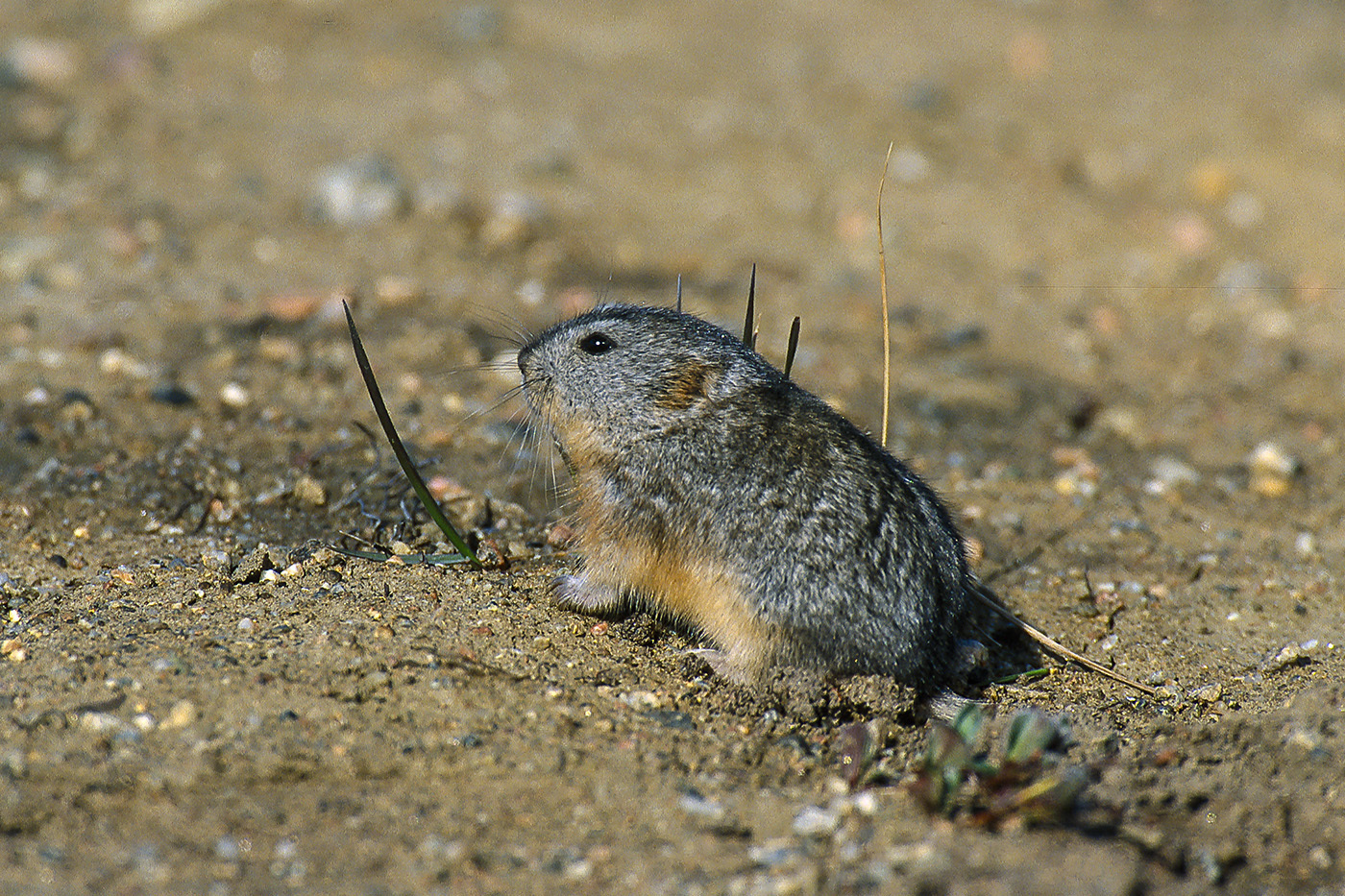
ERIK THOMSEN/BIOFOTO/RITZAU SCANPIX, 2008
Lemmings and their predators are known for their cyclic population fluctuations. Multiplication of the lemming population approx. every four years provide predators with optimum breeding conditions and thus result in larger populations of predators. This leads to increased predation and thus a pronounced reduction in the lemming population. Fewer lemmings mean fewer food sources, resulting in increased mortality among predators. The cycle can thus begin again.
The northern collared lemming lives in North and Northeast Greenland. It is an important herbivore and a vital prey for predators such as snowy owls, longtailed skua, stoats and arctic foxes. In years with many lemmings, predation on the breeding birds of the tundra is lower. The lemming is thus a central element in the food chain in Greenland as well as in the rest of the Arctic.
The climate is changing in the Arctic, and this is changing the living conditions of lemmings and the species they interact with in the food chain. In some places in the Arctic, the lemming’s well-known cyclic population fluctuations seem to have stopped and been replaced by much more unpredictable fluctuations with great variation from one year to the next. The role of climate change in this phenomenon and how it will affect food chains in the Arctic remains uncertain.
Further reading
Read more about Nature and landscape in Greenland
